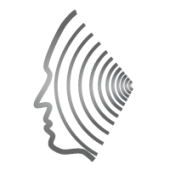The relationship between neck and jaw pain is at times very strong in that at times jaw pain may cause neck pain and visa versa with two very often been present together. It is however being overly simplistic to suggest that treatment of the jaw will help in those with neck problems where all else fails, but in reality this should only be considered where there is evidence of a jaw problem of significance. Thus it should not be assumed that those with a difficult to treat neck pain should have jaw related treatment for example where a clicking is found in the jaw joint, for the simple reason that jaw joint clicking and noise is in 90% of people an entirely innocent occurrence.
Jaw pain is musculo-skeletal in nature meaning that the pain originates from the joint or muscles. Most but not all neck pain is also musculo-skeletal in origin, but can also be caused by compression of nerves in the neck vertebrae (spine). This type of pain does not occur in the jaw. Musculo-skeletal pain in the neck may overlap with jaw pain. Joint pain will typically lead to muscle pain and once muscles are involved there is a strong tendency for involvement of muscles in adjacent areas. Chronic pain is a common feature in jaw, neck and back muscles often in the absence of obvious injury. In the neck and back chronic postural problems may contribute to this pain in these areas and perhaps indirectly so in the jaw.
It is believed this tendency to develop pain in these areas may have something to do with the type of muscle fibre present to a larger extent in these muscles than in other muscles. All these areas are associated with the maintenance of posture which requires a preponderance of postural type muscle fibres, which are prone to chronic pain.
Pain originating in the jaw but causing secondary pain in the neck is very common with the opposite situation also occurring but less so. Pain transfer from one area to the other will be on the same side, making it extremely unlikely that a person with pain in one side of the jaw and in the neck on the opposite side will have any link between the two.
It is possible for a person to have experienced pain in the neck or shoulder for many years prior to being aware of pain in the jaw. Once jaw pain has developed and is treated this can actually in some cases bring relief to a previously difficult to manage neck area pain. This would seem to be on account of us having a capacity for having a jaw problem sufficient to trigger a secondary response in the adjacent area without being aware of having a jaw problem initially. This is often referred to as a sub-clinical problem meaning that although there were changes in the jaw no pain was associated with it until it had developed beyond a certain point or threshold where obvious symptoms developed.
WHIPLASH INJURY
Injury caused by a sudden rapid jerking of the neck, most commonly seen after car accidents involving rear-end collision, is referred to as a whiplash injury. This type of injury is common but has become controversial as although in the majority of cases pain and other symptoms settle within weeks, in some this does not happen for reasons not understood. Whiplash is largely a musculo-skeletal injury with the neck muscles most affected. There is a school of thought which believed that a direct jaw joint injury may also occur during a neck whiplash. It has been pretty conclusively proven that this does not occur. But injury certainly occurs to the neck muscles. As neck muscle injury may lead to jaw muscle problems without direct injury to the latter, it is not uncommon to find people with jaw pain following a whiplash. Mostly this is jaw muscle in origin but in some a jaw joint problem such as jaw locking due to jaw joint disc displacement may occur and often within days of the whiplash injury although there may have been no direct injury to the jaw.
The reason for this is difficult to ascertain and it is possible that these people actually had a developing but symptomless jaw problem or sub-clinical joint problem. It is then possible that the altered activity of the jaw muscles has disrupted the mechanics of the jaw joint itself. This gives us a situation where a neck problem may induce pain or problems in the jaw. Some with jaw pain who also have a high level of neck pain which is in itself unresponsive to treatment may find that management of their jaw pain is equally difficult. Fortunately this scenario is not common.
Neck pain in contrast to jaw pain usually shows a good response to physiotherapy particularly when provided in the early stages of pain. It would always be sensible to have neck or back physiotherapy particularly where a seemingly simple injury is not resolving within a couple of weeks.
